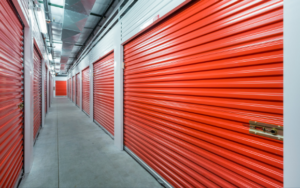
JH Gives Me the Inside Scoop of Self-Storage
After reading my post in the Aug. 15 issue, my friend Jon Herring sent this in. Good, useful information for anyone who, like me, is looking at the potential of self-storage as an option for growing assets and increasing income.
Self-Storage as an Investment
By Jon Herring
My initial interest in self-storage stemmed from conversations with a longtime family friend who owns facilities in Georgia. He described it as the ultimate semi-passive real estate investment. Much lower maintenance compared to traditional rentals. And lower complexity on the operations and human resources side.
In recent years, I have been following a guy named Nick Huber. He started with the purchase of one or two existing self-storage facilities, where he would go in and:
* Do a cosmetic facelift on everything.
* Perform any deferred maintenance.
* Add automation wherever possible to reduce human resource requirements, improve renter experience, and increase security.
* Implement the latest technology for accounting, billing, communications, and security systems and procedures.
* Outsource rote, repetitive computer tasks to virtual assistants in the Philippines to reduce labor costs.
* Roll up any operational and management roles that were not absolutely required by a person at the location to a central operations group, so that multiple facilities could be managed by one team.
* Raise rents, especially in facilities with 100% occupancy. He would raise rents until enough tenants moved out to reach a market equilibrium of about 90% occupancy. (The basic idea is that 100% occupancy means you are not charging enough.)
* Add buildings/ additional units on properties where the real estate footprint permitted expansion and add outdoor storage for boats and RVs where permissible.
These improvements led to revenue increases, greater operational efficiency, lower overhead, and increased profitability. Which in turn led to increased valuations. (A rising real estate market helped.) Then after a few years, he would refinance at the higher valuation, take out his original investment, reinvest in another property, and repeat. And now he takes on limited partners in his deals, so he’s expanding that way as well.
Self-storage flew under the radar for a long time because it’s not a sexy business. It doesn’t have the “cool factor” of vacation rentals or rehab-and-rent real estate, for example. However, it is a GREAT business. It can be very profitable, with reliable revenues, high occupancy, low complexity, and low maintenance.
But here’s the thing… the secret is out.
There are a LOT more investors getting into the market. They are building new and hitting up every aging existing property with offers, driving up valuations.
But there is a niche with significant demand that I believe is more overlooked: contractor garages.
I’m sure you’re familiar with these facilities. The units are larger than self-storage, but smaller than an industrial warehouse. The space is about 1,500 square feet per unit, with a main door, large overhead garage door, half bathroom, and sometimes a small office.
These spaces are rented by builders, plumbers, electricians, artists, e-commerce companies, car collectors, etc.
From what I understand, this asset class has five times the demand of self-storage and less competition from investors and operators.
You mentioned that you wanted to learn more about this business, so I wanted to pass this along. I hope it’s helpful.
